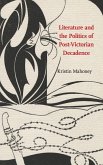In the sixteenth century the modern meaning of courtship - 'wooing someone' - developed from an older sense - 'being at court'. The Rhetoric of Courtship takes this semantic shift as the starting point for an incisive account of the practice and meanings of courtship at the court of Elizabeth I, where 'being at court' pre-eminently came to mean the same as 'wooing' the Queen. Exploring the wider context of social anthropology, philology, cultural and literary history, Catherine Bates presents courtship as a judicious, sensitive and rhetorically conscious understanding of public and private relations. Gascoigne, Lyly, Sidney, Leicester, Essex, and Spenser are shown to reflect in the fictional courtships of their poetry and prose the vulnerabilities of court life that were created by the system of patronage. The Rhetoric of Courtship thus makes an important contribution to Renaissance cultural history, using the court of Elizabeth I as a test case for representations of the courtier's role and power in the literature of the period.In the sixteenth century the modern meaning of courtship - 'wooing someone' - developed from an older sense - 'being at court'. The Rhetoric of Courtship takes this semantic shift as the starting point for an incisive account of the practice and meanings of courtship at the court of Elizabeth I, where 'being at court' pre-eminently came to mean the same as 'wooing' the Queen. Exploring the wider context of social anthropology, philology, cultural and literary history, Catherine Bates presents courtship as a judicious, sensitive and rhetorically conscious understanding of public and private relations. Gascoigne, Lyly, Sidney, Leicester, Essex, and Spenser are shown to reflect in the fictional courtships of their poetry and prose the vulnerabilities of court life that were created by the system of patronage. The Rhetoric of Courtship thus makes an important contribution to Renaissance cultural history, using the court of Elizabeth I as a test case for representations of the courtier's role and power in the literature of the period.
Table of contents:
List of illustrations; Acknowledgements; Prologue; 1. The rhetoric of courtship: an introduction; 2. The semantics of courtship; 3. Courtship at Court: some pageants and entertainments at the Court of Elizabeth I; 4. 'Courtly courtesies': ambivalent courtships in Euphues, Euphues and his England, and the Arcadia; 5. 'Of court it seemes men courtesie doe call': the Amoretti, Epithalamion, and The Faerie Queene, book VIl Epilogue; Notes; Bibliography; Index.
This book considers how writers and courtiers related to Elizabeth I within a system of patronge and how they protrayed this relationship in fictional courtship of poetry and prose.
This book considers how writers and courtiers related to Elizabeth I within a system of patronge and how they protrayed this relationship in fictional courtship of poetry and prose.
Table of contents:
List of illustrations; Acknowledgements; Prologue; 1. The rhetoric of courtship: an introduction; 2. The semantics of courtship; 3. Courtship at Court: some pageants and entertainments at the Court of Elizabeth I; 4. 'Courtly courtesies': ambivalent courtships in Euphues, Euphues and his England, and the Arcadia; 5. 'Of court it seemes men courtesie doe call': the Amoretti, Epithalamion, and The Faerie Queene, book VIl Epilogue; Notes; Bibliography; Index.
This book considers how writers and courtiers related to Elizabeth I within a system of patronge and how they protrayed this relationship in fictional courtship of poetry and prose.
This book considers how writers and courtiers related to Elizabeth I within a system of patronge and how they protrayed this relationship in fictional courtship of poetry and prose.








